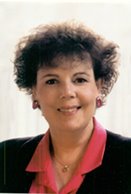In 2001, the group purchased the Hoffmann-Boeker farmstead as the future home of a museum dedicated to creating, preserving and teaching fiber arts. The 2.2 acre farm includes seven original stone and timber structures; the dairy barn with silo, farmhouse, ice house and summer kitchen/smokehouse/blacksmithery.
The WMQFA has since refurbished the barn for use as a gallery and education center, opening in August 2011. The site received Landmarks Designation from the City of Cedarburg in 2004.
Texas Quilt Museum
 Texas Quilt Museum, La Grange, Texas
Texas Quilt Museum, La Grange, TexasIn the rolling hills of Central Texas, La Grange, founded 1837, features an old town square, shopping and restaurants. In a 10,000 sq. ft, 19th century restored building an array of quilting styles, sizes, textures and nationalities are housed and displayed from wall to wall and ceiling to floor. History and information is available in literature form or (if you are lucky) the curator will "show you around ". The variety and diversity would be impossible to describe and I can only say, "it's a must see".









No comments:
Post a Comment